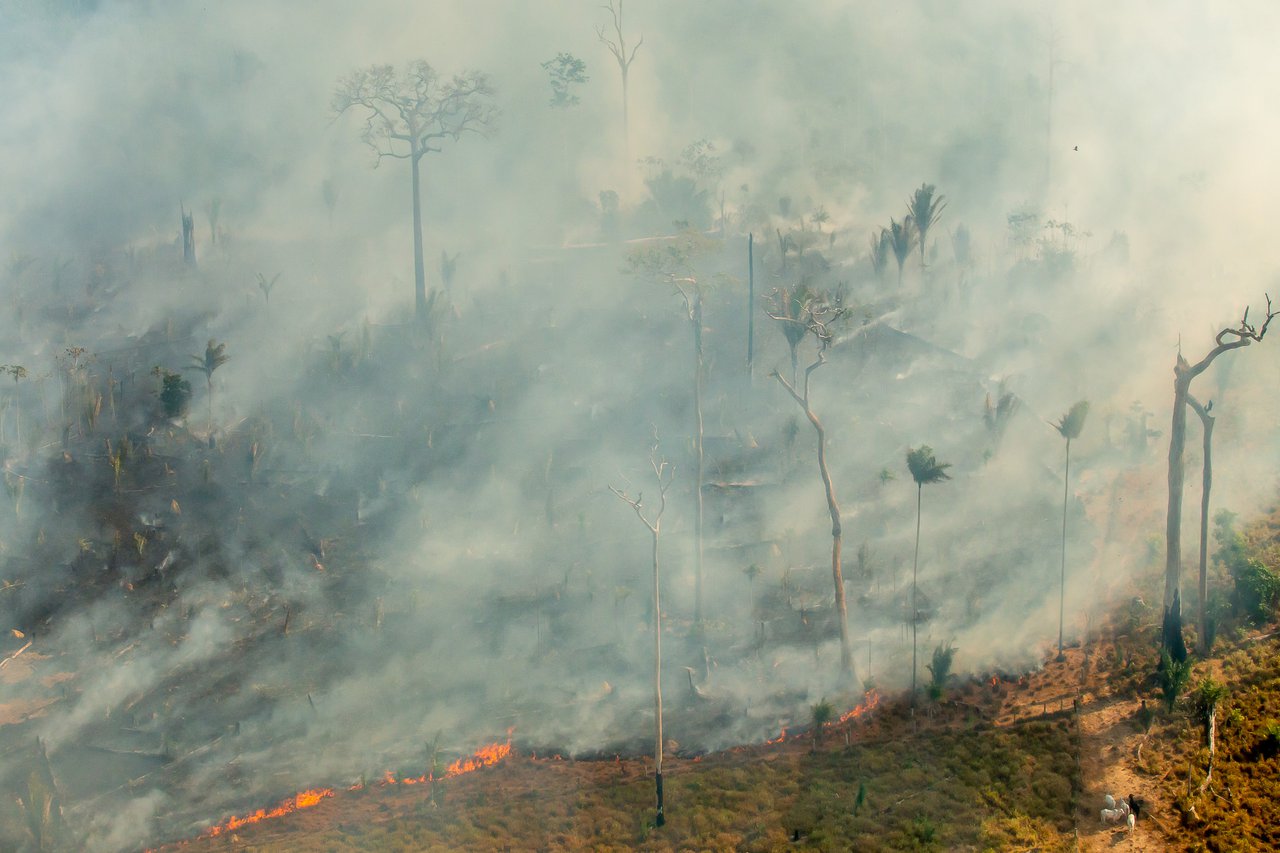This week, “forest first” journalism platform Sumaúma is heading to COP28 in Dubai from Altamira, Brazil. Their reporter Claudia Antunes explains why.
Sumaúma, or kapok as she is known in English,
is the name of one of the tallest trees in the Amazon rainforest. With a large
trunk and solid, outspread roots, a sumaúma lives
for around 300 years and is present in the cosmology of many Brazilian
Indigenous peoples, such as the Xipaya, for instance, who see her as a link
between the sky and the earth.
We borrowed the name Sumaúma for our journalism platform, based in Altamira, in
the Amazonian state of Pará. The urban center of Altamira is surrounded
by territories of Indigenous and traditional communities, who are the
target of loggers, illegal miners and land grabbers that aim to expand the
frontiers for soy and cattle.
The city is part of the so-called “arc of deforestation” – the frontline of destruction. Between 1985 and 2021, the Brazilian Amazon lost 12% of its cover due to predatory human activity.

Photographer : Matheus Alves/Sumaúma
We at Sumaúma see the Amazon as the center of the world. This is not only because the world´s largest tropical forest is a global carbon sink and a regional rainfall regulator. We also believe forest communities, who live in symbiosis with nature, can be a guide for the urgent system transformation that all of humanity needs to confront the climate crisis that threatens present and future generations.
Climate negotiations must be
inclusive for there to be a chance for climate justice. It
is important for Sumaúma to be present at this year´s United Nations Climate
Summit COP28, precisely
to amplify the voices of Indigenous people and forest communities, to
make these voices heard over the lobbyists for major polluters who
sadly capture the negotiations space.
The impact of global warming is
felt strongly in Brazil this year, and as usual, Indigenous, riverside and
working class urban communities are the ones that suffer most. We have been
going through atypical floods in the south of the
country, a heat wave in the southeast and an extreme drought in the north, where the Amazon
forest is located. Along with El Niño and global climate disruption, scientists
have pointed out that extreme weather her is linked
to destruction of the rainforest by loggers, ranchers and
miners.

Photographer : Lela Beltrão /Sumaúma
With the drought in the Amazon, mighty rivers such as the Negro have fallen to the lowest levels in decades, and villages that relied on them for fishing and transportation have became isolated. The air of the cities such as Altamira and Manaus, capital of the Amazonas state, was filled for weeks by the smoke from fires that spread easily because the forest is tinder dry.
The current government, led by president Luiz Inácio Lula da Silva and his Environment minister, Marina Silva, has managed to decrease the high levels of deforestation that were the hallmark of the previous administration of Jair Bolsonaro, a climate negationist. But the areas that had been deforested are more fragile and flammable, and forest loss levels remain dangerously high.
The COP28, held in Dubai, in the United Arab Emirates – a petrostate – acquired more urgency because of the intensification of extreme weather events.
To Brazil, a strong outcome is vital with the country set to host COP30 in 2025, when the Paris Agreement reaches its 10 year anniversary. COP30 will be held in Belém, the capital of Pará. At that event, member-states are expected to present more ambitious national contribution plans to achieve the world’s objective of drastically decreasing greenhouse gases.
Since the summit of the eight countries of the Amazon region in the same city, in August 2023, social movements have been pressing the Brazilian authorities to address the country's internal contradictions. Brazil has promised to end deforestation by 2030, but Congress has been discussing projects that will make it more difficult to protect and demarcate Indigenous territories, where the forest is best preserved. Lula´s government has been saying it wants to turn the country into a “green economy”, but has kept plans to open new oil and gas exploration fields, including in the Amazon.

Photographer : Matheus Alves/Sumaúma
The movements that organized the demonstrations in Belém in August – representing Indigenous peoples, landless peasants, riverside communities and Quilombolas, the descendants of enslaved Africans – will send representatives to Dubai. Once more, they will have to break barriers of class, colour, gender and language – many of them are at least bilingual, but none of their languages, Indigenous or Portuguese, are official at the UN. They will demand climate justice, the end of environmental racism, and insist that they must be part of the solution.

